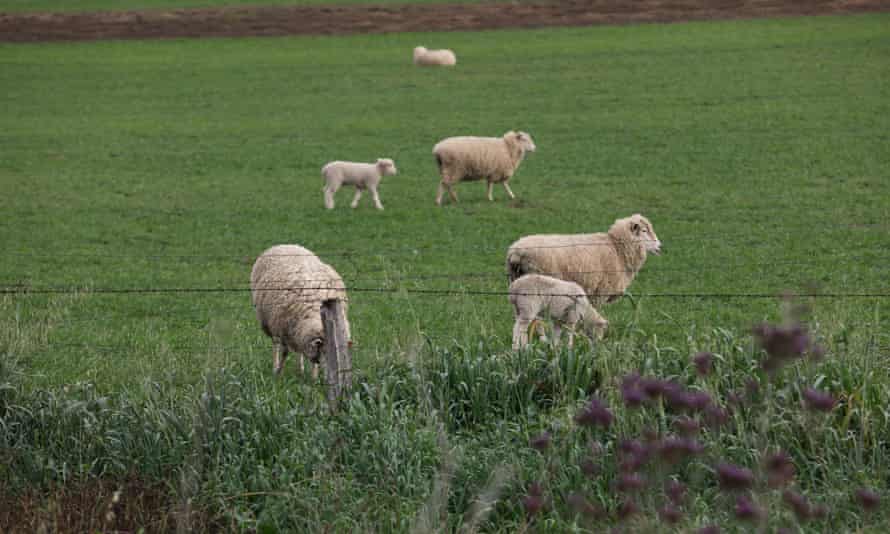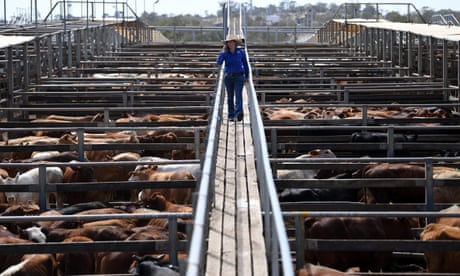Extract from The Guardian
The Grattan Institute’s report on agriculture says farmers should directly benefit from efforts to curb emissions, currently 15% of Australia’s total.

Australian farmers should also benefit from actions that reduce emissions and limit climate damage, Melbourne-based thinktank the Grattan Institute found in its paper, launched ahead of the global climate conference in Glasgow in November.
The report covers the agricultural sector, which was collectively responsible for 15% of Australia’s greenhouse gas emissions in 2019, with the government’s most recent projections indicating those emissions will grow until 2030.
Tony Wood, the lead author of the study and the director of the energy program at the Grattan Institute, said agriculture presents challenges which are distinct from other economic sectors.
“It would be easy to equate cows with coalmines and argue we should just stop the activity. But agriculture provides our food and going vegetarian would be a momentous policy challenge,” Wood said.
The report’s first recommendation is that agriculture not be exempted from any national net zero target because “that simply doesn’t work without including the emissions from all sectors”.
The report says it is likely the agriculture sector will still be a major source of emissions in 2050, even if its recommendations are followed.
Agriculture’s link with the land sector allows the industry to aim for net zero by removing carbon from the atmosphere through activities such as soil carbon and planting trees to offset emissions.
The report recommended investing in better outreach programs to provide farmers with more information and practical advice, as well as more secure income streams to support their investment in lower-emissions practices.
To sharpen incentives, the report included strong recommendations to help farmers begin trading carbon through improvements to the Emissions Reduction Fund (ERF).
“Complexity and the administrative cost of participating in the scheme deters potential proponents of many small projects,” the report said.
It recommended allowing multiple projects to be submitted under a single application to help small landholders participate in the scheme.
Other recommendations regarding the ERF were to broaden the range of emissions-reducing activities and establish a fixed-price purchasing desk to allow access to the fund for landholders too small to participate in an auction.
Additionally, the report supports the development of a carbon credit exchange, which differentiates between types of credits including benefits such as biodiversity. Wood said this would align with government initiatives already in place including the biodiversity platform introduced by the minister for agriculture, David Littleproud.

Wood highlighted that at the moment the ERF is a major source of revenue in agriculture, but the current government-funded system is not sustainable, and that in future the offsetting will have to be paid for by taxpayers, consumers or famers.
The report also included recommendations focused on improving the long-term outlook for emissions reduction by supporting the research, development, and deployment of new technologies.
The report recommended “the government should expand the remit and increase funding of the Australian Renewable Energy Agency (Arena) to allow it to support early-stage development of low-emissions agricultural technologies that are not energy-related.”
Suzanne Harter, a climate and energy campaigner at the Australian Conservation Foundation, said that while “reducing emissions from agriculture is a critical part of what’s needed for Australia to achieve net zero emissions and farmers should be helped in this effort … Arena cannot be the solution to every sector’s investment needs.”
Harter said the recommendation to expand the agency’s remitrisks further diluting its mission to support renewable energy technology.
For the land sector, the report recommended state and territory governments should not weaken existing land clearing laws, and should aim to keep existing stocks of nature-based carbon at or above current levels.
The report clarifies that recommendation does not prevent all vegetation clearing, but ensures that clearing or land degradation in one location is offset by regrowth or land restoration elsewhere.
“The goal should be to ensure that the land sector stays at or below net zero – it should continue to remove more carbon from the atmosphere each year than it emits,” it states.
As well as reducing the risk it presents to 70% of the sector’s products, exports which may be subjected to future carbon tariffs from other nations, the agriculture industry itself is particularly vulnerable to climate change.
The report said changes in rainfall patterns over the past 20 years have cut profits across the sector by 23%.
“The more that farmers can reduce emissions, the fewer credits they will need to offset their own emissions, and the more they can sell to others – diversifying their revenue streams,” Wood said.
The agriculture report is the third of a series of five policy reports, including transport and industry, ahead of the Cop26 climate summit in Glasgow in November.
The report highlights, as the Treasurer said on Friday, that “converging international and domestic political pressures have created a window of opportunity for progress on climate change policy.”
Energy minister Angus Taylor’s office was contacted for comment.

No comments:
Post a Comment